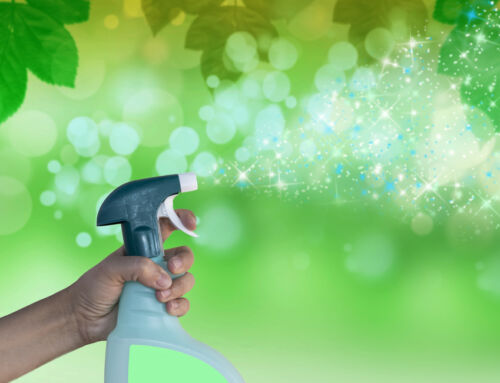Tips to Keep Your Home Tidy Between Cleaning Visits in Kensington
Keeping your home tidy in between cleaning visits can sometimes feel like an uphill battle, right? Just when you think you’ve got everything organized, a stray shoe appears in the middle of the living room, and suddenly chaos reigns again! The truth is, maintaining a clean space doesn’t have to be a major chore—it’s all about building simple habits that make tidying up manageable.
By adopting smaller routines and a few clever tricks, you can create an inviting atmosphere that feels welcoming every day, not just on cleaning day. With just a bit of consistency and teamwork, you can keep your home in Kensington looking great without spending hours on end scrubbing floors or dusting shelves. Let’s dive into some practical tips to make it easier for you!
To keep your home tidy between cleaning visits, establish a daily cleaning routine by dedicating 15-20 minutes for quick tasks like wiping surfaces and tidying up. Additionally, implementing the “two-minute rule”—where you immediately complete small tasks that take under two minutes—will help prevent clutter from accumulating over time.
Daily Tidy Routine
Setting aside time each day for small cleanup tasks can significantly impact your home’s overall tidiness. It’s about forming habits that make cleaning feel less like a chore and more like an integral part of your daily life. Dedicating just 15-20 minutes a day can keep chaos at bay, allowing you more time to enjoy your space rather than constantly working to restore order.
Set a Timer for Quick Cleanups
One effective method is to set a timer for those quick cleanups. Imagine having just 20 minutes to make a noticeable difference in your home. When that timer starts, you’re focused and efficient, tackling small but vital tasks. Whether it’s picking up clutter from the living room, wiping off kitchen counters, or re-hanging clothes that have ended up on the chair instead of the closet, these mini-marathons lead to rewarding results.
Maintaining a sense of urgency with those timers gives you clear goals to work towards in those fleeting moments. You’d be amazed at how achievable it feels when you know a task has its own dedicated time slot!
Clean As You Go
Another cornerstone of a successful cleaning routine is the principle of cleaning as you go. This means addressing messes immediately rather than letting them accumulate over time. For instance, think about washing your dishes right after meals—it’s far less daunting than facing a sink full of dirty plates at day’s end. Similarly, wiping down surfaces in the bathroom after brushing your teeth keeps grime away and eliminates clutter before it can even form.
“Don’t put off until tomorrow what you can do today” perfectly encapsulates this approach. By dealing with these minor upkeep tasks as they arise, you not only prevent larger messes from developing but also create a more harmonious living space.
By embodying these small yet impactful practices, the journey towards maintaining your home shifts from being overwhelming to highly manageable. Understanding how these techniques align will guide us into better organizing structures that further enhance your home’s functionality and appearance.
Efficient Organizing Systems
Organization doesn’t have to be overwhelming. One of the most impactful steps you can take is to label everything in your living space. Using labels for storage boxes, kitchen containers, and filing systems can make a world of difference. Imagine opening up your pantry, where flour, sugar, and rice all look strikingly similar. Clear labels help everyone know exactly which container holds what, preventing any confusion when trying to whip up a meal.
After mastering the art of labeling, consider incorporating multi-function furniture into your living spaces for added convenience.
Multi-function furniture is a game-changer for maximizing both space and organization. Investing in items like ottomans with compartments or beds with drawers not only saves square footage but also provides clever hideaways for stowing away blankets, toys, or seasonal clothing. This creates a sense of order while ensuring that everything has its designated place.
If you have kids or pets running around, creating a designated “drop zone” for items like shoes, bags, and mail can drastically cut down on clutter right at the entrance. Imagine walking through your front door and having a specific area—complete with hooks and bins—where family members can drop their items instead of scattering them throughout the house.
Weekly Cleaning Tasks
Weekly cleaning tasks help you maintain a tidy home without overwhelming yourself with chores. By dedicating specific days for particular cleaning activities, you can keep your space organized while ensuring that you’re not spending hours on end trying to make everything spotless.
You might find it helpful to create a simple weekly schedule, marking what needs cleaning each day. This makes the tasks feel less daunting and more manageable.
Vacuuming and Mopping
Allocating a designated day for vacuuming and mopping will greatly enhance the cleanliness of your home. Start by focusing on high-traffic areas such as the living room and kitchen, where dust and dirt tend to accumulate quickly. Make sure to reach under furniture and other hard-to-reach places where dust bunnies often hide. After vacuuming, mop the floors using a pH-neutral cleaner; this helps lift stubborn stains while being gentle on your flooring material.
Once the floors are cleaned and gleaming, it’s time to tackle another crucial area in your home: the bathrooms.
Bathroom Cleaning
Dedicating another day specifically for bathroom cleaning is essential. This space requires thorough care to maintain a healthy environment. Focus primarily on scrubbing toilets, sinks, and bathtubs each week to prevent grime buildup that can lead to unpleasant odors or stubborn stains over time. It’s amazing how fresh a clean bathroom can smell after just a quick scrub.
In addition to scrubbing surfaces, don’t forget those finishing touches that elevate your bathroom’s overall appearance. Cleaning mirrors effectively can brighten up your spaces considerably—use a glass cleaner or a homemade vinegar solution for streak-free shine! Don’t overlook the importance of replacing towels and disinfecting high-touch surfaces like light switches and faucet handles; these small actions contribute significantly to creating an inviting atmosphere.
Think of maintaining your bathrooms like tending to a garden: Regular care promotes growth and beauty, while neglect could lead to chaos. Over time, these small weekly tasks become habitual, seamlessly integrated into your lifestyle.
With both floors and bathrooms tackled, we now shift our focus towards simplifying your life by reducing clutter in everyday situations.
Declutter Regularly
Dealing with clutter can feel overwhelming, especially if it has accumulated over time. By committing to regular sessions, this task becomes manageable and less stressful. Consistency is key—by setting aside just a few minutes each week, you can maintain a tidy living space that enhances your home’s appearance and overall well-being.
To make decluttering effective, establishing a personal system is important. One practical method is the “One Item In, One Item Out” rule. This means that for every new item you bring into your home, you must eliminate one item. Not only does this keep clutter from building up quickly, but it also fosters mindfulness regarding your purchases. For instance, if you buy a new sweater, consider donating an old one from your closet.
- Donate gently used clothing: There are many organizations that appreciate contributions of clothes that are in good shape but no longer needed.
- Recycle paper-based clutter: Attack mountains of paperwork by recycling documents you no longer need or digitizing those you want to keep but don’t have space for.
- Sell unused electronics or gadgets: Items like old phones or unused kitchen appliances can often find new homes—and sometimes even earn you a bit of cash!
Regular decluttering not only clears physical space but also offers profound mental and emotional advantages.
Additionally, consider blocking time on your calendar each month dedicated solely to decluttering different areas of your home. Perhaps Sunday afternoons can become your dedicated “declutter day.” Engaging in this habitual practice reinforces the habit of organization in your daily life. The benefits of tackling clutter far outweigh the initial effort required—it’s an investment in both your home and mental clarity.
Control Dust and Surfaces
Dust, that persistent invader, seems to sneak into every corner of our homes when we’re not looking. Just when you think you’ve tackled it, it returns with a vengeance. However, with regular attention, we can keep dust accumulation at bay, making our living spaces more enjoyable and healthier. One effective method is to integrate microfiber cloths into your cleaning routine. Microfiber cloths are revolutionary because they trap dust particles instead of merely redistributing them like traditional dusters do. This means that while you might think you’re just wiping away dirt, you’re actually capturing it efficiently.
Use Microfiber Cloths
When using microfiber cloths, make it a point to dedicate one to each room. This straightforward practice prevents cross-contamination—imagine going from the dusty living room to the kitchen with the same cloth. Not only does this maintain cleanliness, but it ensures that the germs from one area don’t take a joyride to another.
To maximize their potential, consider lightly dampening the microfiber cloth before use; this can significantly enhance their effectiveness in picking up particles, as moisture helps cling onto dust rather than letting it escape back into the air.
While it’s critical to sweep away dust regularly, don’t overlook the importance of sanitizing surfaces that see multiple touches throughout the day.
Disinfect Frequently Touched Surfaces
Disinfecting high-touch areas is an essential part of maintaining a safe home environment. Think about it: door handles, light switches, and remote controls often become a breeding ground for germs simply because they are touched so frequently. We unknowingly transfer bacteria around our homes, especially during cold and flu season.
Setting a schedule to disinfect these surfaces at least once a week can significantly reduce the risk of illness within your household. It’s a small commitment for peace of mind.
This practice becomes even more crucial when you consider how simple it is to wipe these surfaces down with an effective disinfectant. Just grab your favorite multipurpose cleaner (make sure it’s suitable for various materials) and give those frequently used spots the attention they deserve. It takes only a few minutes but pays dividends in keeping you and your loved ones safe from lurking germs.
By taking control of dust accumulation through regular cleaning routines and paying attention to frequently touched surfaces, you’re actively creating a healthier living environment for everyone. As we continue on this journey of maintaining an orderly home, let’s explore how involving others in upkeep can amplify efforts and lighten the load.
Involve Family in Upkeep
Cleaning doesn’t have to be a solitary endeavor. In fact, making it a family affair can transform what often feels like a burden into an enjoyable and engaging activity. By assigning tasks that suit each family member’s age and abilities, you cultivate a team dynamic where everyone contributes to the family’s well-being, all while teaching valuable life skills along the way.
Assign Age-Appropriate Tasks
Start with younger children, who can tackle simpler chores like putting away toys or organizing their books. These small tasks help instill a sense of accomplishment and teach them early on about responsibility and cleanliness. As they become accustomed to these routines, you’ll likely notice a reduction in clutter, making organization naturally more manageable within your home.
Teens can take on more demanding responsibilities such as vacuuming, washing dishes, or even mowing the lawn.
Studies show that children who participate in household chores from a young age are more likely to grow into responsible and self-reliant adults. More than just cleaning your home together, you are building crucial skills like time management, teamwork, and communication—which tie wonderfully into how families interact day-to-day.
Encourage Cooperative Cleaning
Another key strategy is to emphasize cooperation rather than competition during cleaning sessions. Instead of racing against each other or feeling pressured by deadlines, create an atmosphere where open communication is encouraged. For instance, maybe one person can clean while another organizes—a symbiotic dance that leaves no room for frustration!
Moreover, consider using tools such as checklists or chore charts to keep track of everyone’s responsibilities.
Utilize Trackers for Accountability
Visual reminders can be incredibly effective in maintaining consistency and accountability within the family unit. Setting up chore charts allows everyone to see who’s responsible for which task at any given time—this isn’t merely an organizational tool but also serves as motivation for family members to complete their chores efficiently.
By establishing a routine where everyone partakes in upkeep, your home becomes neater and more organized. It fosters a sense of community among family members while ensuring that the burden of cleanliness doesn’t fall solely on one person’s shoulders. Embrace this opportunity to share responsibility—it can genuinely improve both the state of your home and the relationships within it.
Share this article
Follow us
A quick overview of the topics covered in this article.










